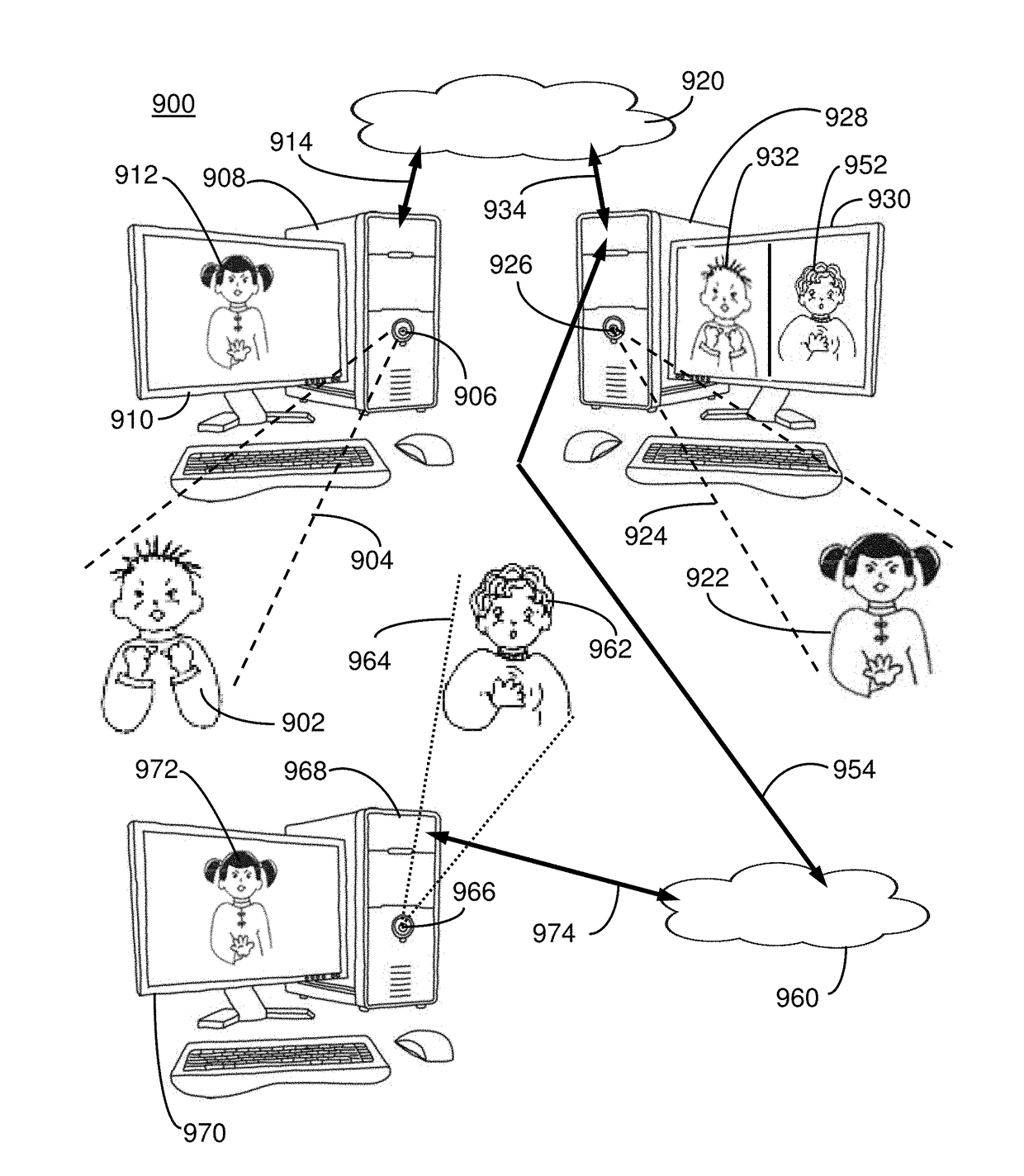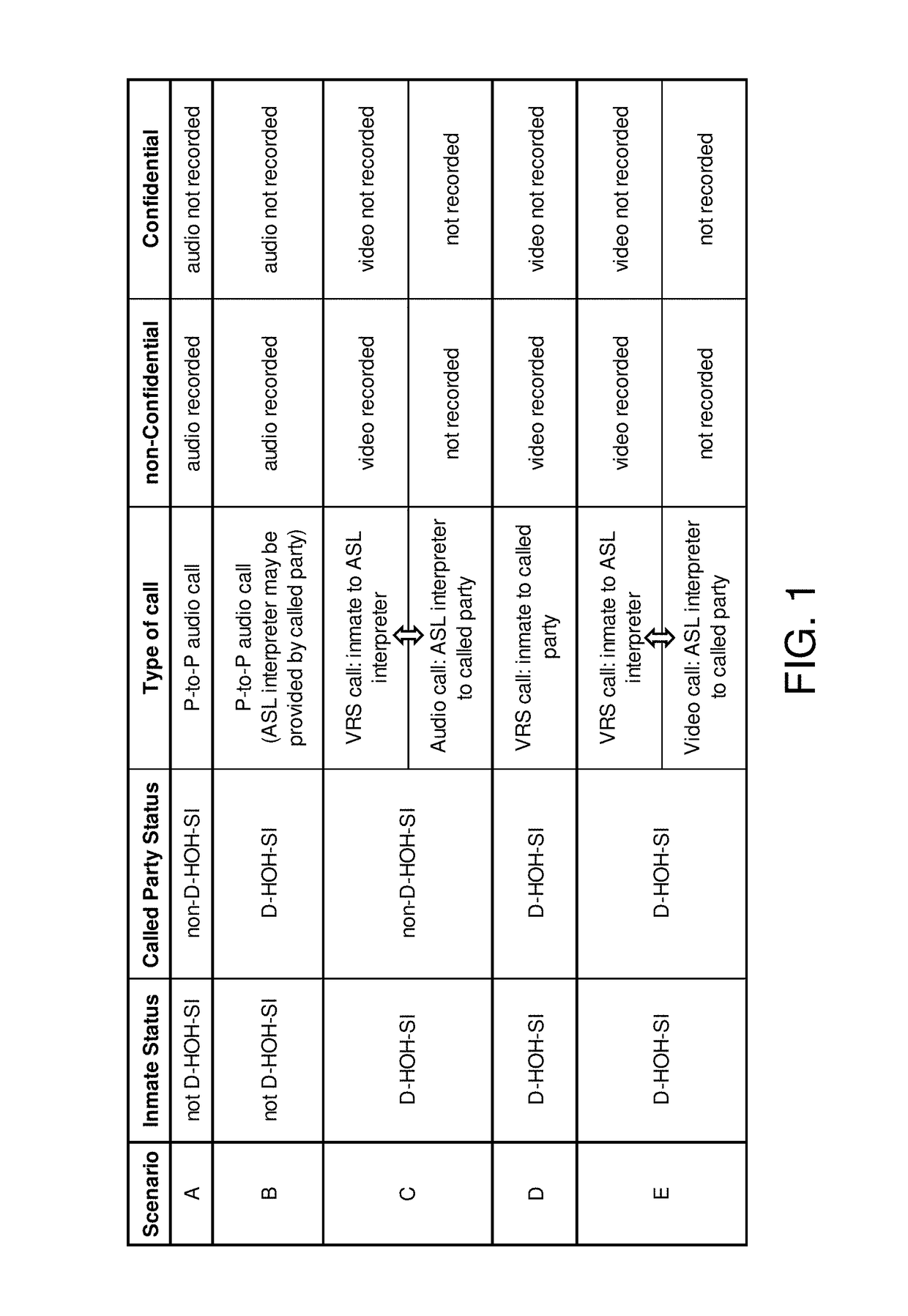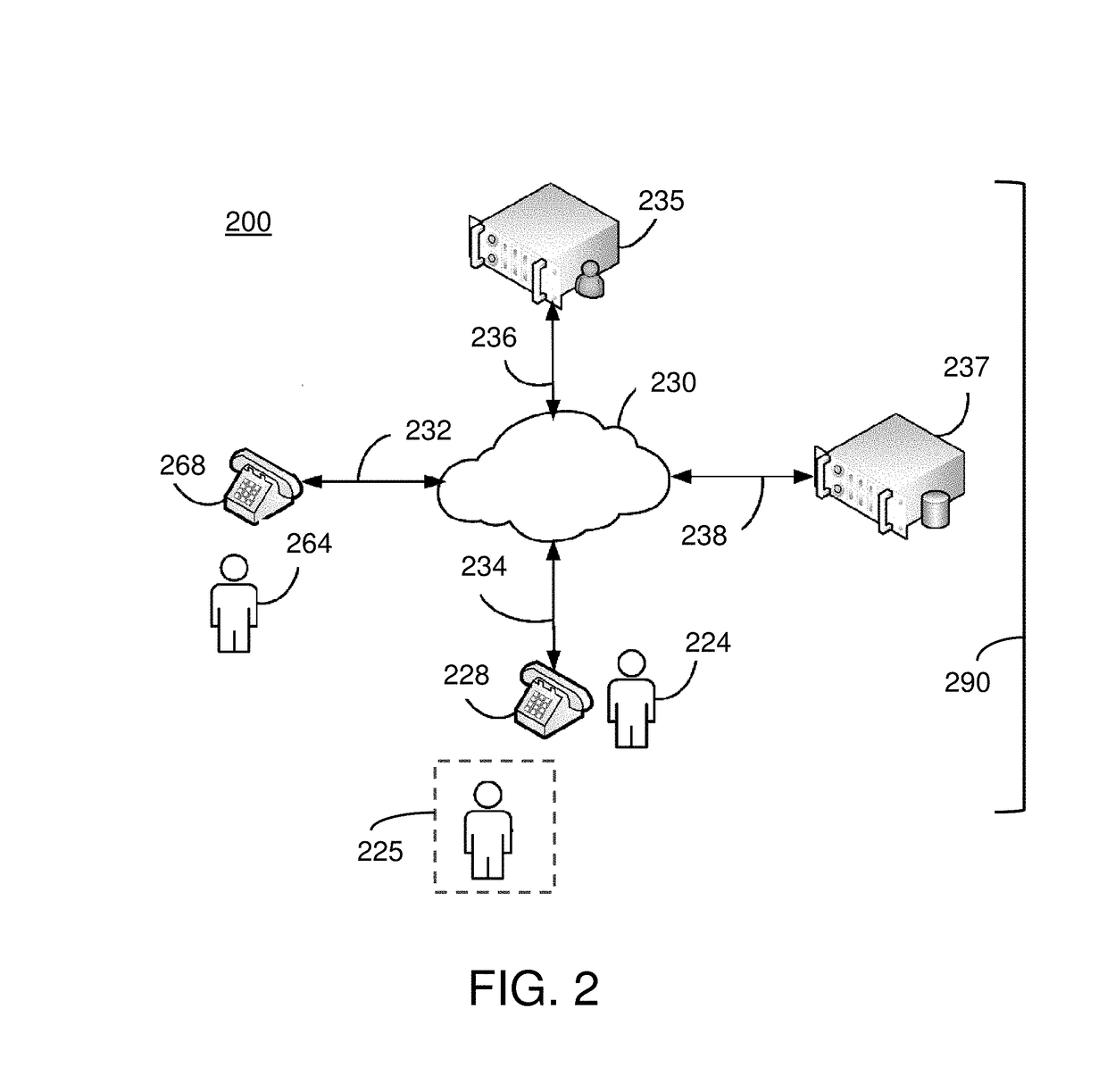Method and system for using a video relay service with deaf, hearing-impaired or speech-impaired called parties
a video relay and deaf technology, applied in the field of telecommunication services, can solve the problems of inability to communicate with the outside world, difficulty or impossible audio communication, and traditional telephony for persons who are d-hoh, and achieve the effect of maintaining safety and security
- Summary
- Abstract
- Description
- Claims
- Application Information
AI Technical Summary
Benefits of technology
Problems solved by technology
Method used
Image
Examples
first embodiment
Scenario E: D-HOH-SI Inmate Indirectly Calling a D-HOH-SI Called Party
[0056]FIG. 6 shows scenario E 600: a D-HOH-SI inmate 604 indirectly communicating with a D-HOH-SI called party 664 according to a first embodiment. The system shown in FIG. 6 comprises two parts:
[0057]1) a first video link 690 between D-HOH-SI inmate 604 and an SLI 614, and
[0058]2) a second video link 692 between SLI 614 and D-HOH-SI called party 664.
[0059]The first video link 690 is comparable to the VRS calling system in FIG. 3 for scenario C, between inmate 304 and SLI 314. A difference between scenario C and scenario E is that instead of an audio call between SLI 314 and non-D-HOH-SI called party 324, in scenario E a video call is necessary between SLI 614 and the D-HOH-SI called party 664 since called party 324 cannot conduct audio communications.
[0060]In scenario E, D-HOH-SI inmate 604 wants to communicate with D-HOH-SI called party 664, however because of the safety and security concerns discussed for scena...
second embodiment
Scenario E: D-HOH-SI Inmate Indirectly Calling a D-HOH-SI Called Party
[0073]FIG. 8 shows scenario E 800: a D-HOH-SI inmate 804 indirectly communicating with a D-HOH-SI called party 864 according to a second embodiment. The system shown in FIG. 8 comprises two parts:
[0074]1) a first video link 890 between D-HOH-SI inmate 804 and an SLI 814, and
[0075]2) a second video link 892 between SLI 814 and D-HOH-SI called party 864.
[0076]A main difference between the first embodiment in FIGS. 6 and 7, and the second embodiment in FIGS. 8 and 9, is the configuration of displays and video capture devices, and embedded software, at the site occupied by the SLI 814. The first video link 890 is comparable in function to the first link 690 (FIG. 6), while the second video link 892 is comparable in function to the second link 692 (FIG. 6).
[0077]As for the first embodiment, D-HOH-SI inmate 804 wants to communicate with D-HOH-SI called party 864, however because of the safety and security concerns discu...
PUM
 Login to View More
Login to View More Abstract
Description
Claims
Application Information
 Login to View More
Login to View More - R&D
- Intellectual Property
- Life Sciences
- Materials
- Tech Scout
- Unparalleled Data Quality
- Higher Quality Content
- 60% Fewer Hallucinations
Browse by: Latest US Patents, China's latest patents, Technical Efficacy Thesaurus, Application Domain, Technology Topic, Popular Technical Reports.
© 2025 PatSnap. All rights reserved.Legal|Privacy policy|Modern Slavery Act Transparency Statement|Sitemap|About US| Contact US: help@patsnap.com



